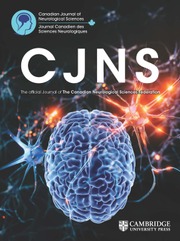No CrossRef data available.
Article contents
A.4 Automating gait analysis in children with Cerebral Palsy using an artificial intelligence-augmented pipeline
Published online by Cambridge University Press: 10 July 2025
Abstract
Background: Cerebral palsy (CP) is a neuromotor disorder whereby gait abnormalities are predominant. Motion analysis is instrumental in management. While 3D kinematic labs exist, they are costly to operate, and the expertise required to interpret limits their availability to only a handful of facilities. In response, we have developed an Automated Intelligence (AI) driven pipeline to automate gait evaluation using 2-dimensional video. We assess the performance of this tool in comparison to traditional evaluation using visual assessment by trained human expert. Methods: A dataset of 109 patients with CP (6–37 years) (GMFCS I – II) was processed using our tool. The Edinburgh Visual Gait Score (EVGS) was derived using videos capturing sagittal and coronal views. Algorithm performance was determined by comparing automated EVGS scores against clinical expert scoring. Results: The AI pipeline successfully analysed 105/109 patient videos. For most EVGS parameters (14/17), the algorithm demonstrated moderate to high accuracy (70-94%), while 3 parameters (hindfoot valgus/varus, maximum lateral trunk shift, pelvic rotation at midstance) demonstrated lower accuracy (58-62%). Conclusions: This study validates the feasibility of an AI-augmented pipeline for automating EVGS-based gait assessments. With ongoing development, this technology has potential to improve accessibility to gait analysis and allows deployment outside of traditional settlings.
Information
- Type
- Abstracts
- Information
- Copyright
- © The Author(s), 2025. Published by Cambridge University Press on behalf of Canadian Neurological Sciences Federation

